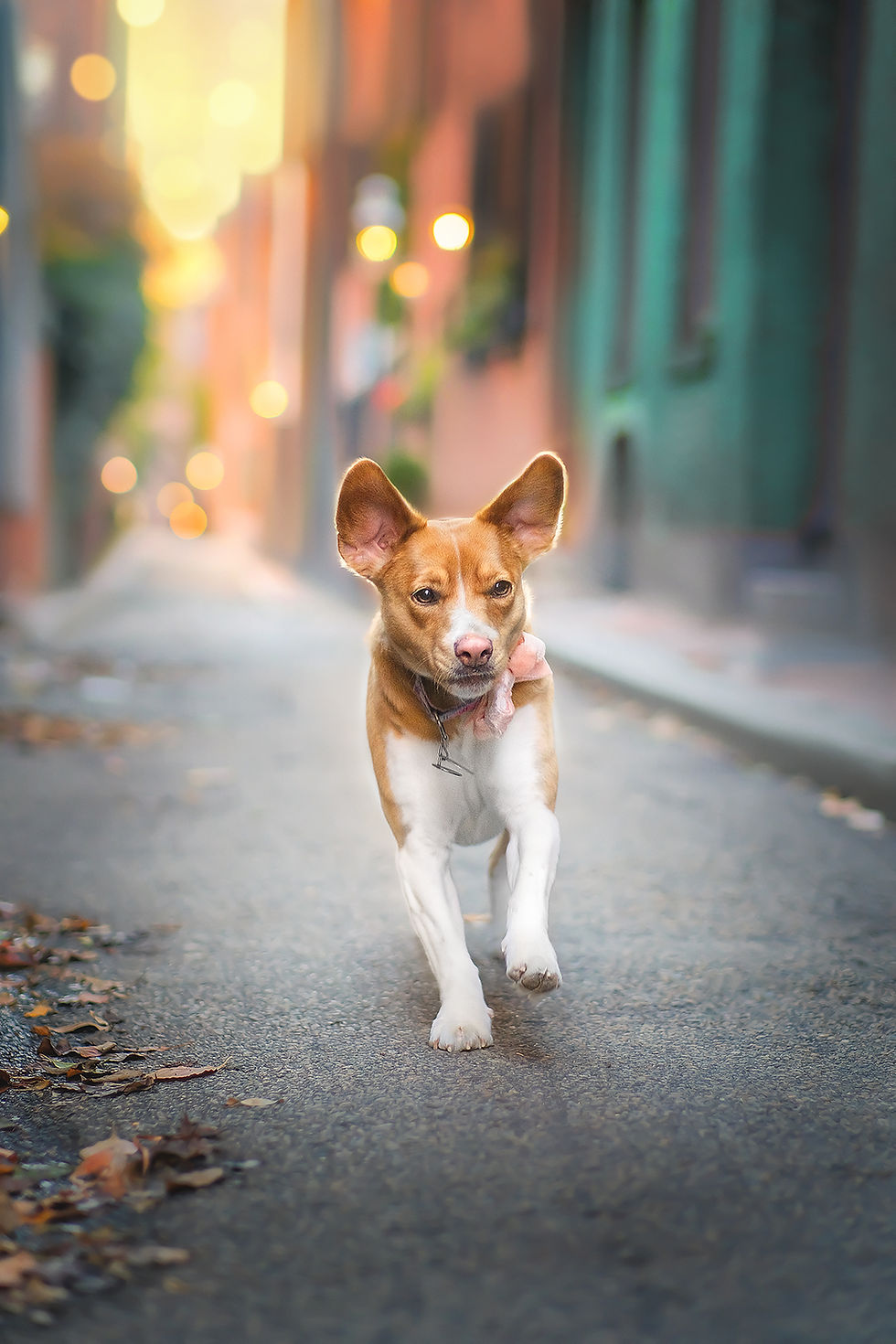Best lenses for jumping and running dogs
- Jane

- Feb 7, 2023
- 3 min read
Updated: May 27, 2024

Dogs in motion are one of the most challenging plots for any camera. This type of plot requires the right lens, an appropriate camer
a body, and a particular shooting skill. I would say that all three paraments are equally important when discussing dogs in motion. The lens won’t be able to fix a weak camera focus system and lack of shooting skills. Please consider this while reading.
Focus speed
Focus speed is critical if you want to catch dogs in motion. You should choose the fastest lenses available. Usually, the speed is included within a lens’ description. But note that all descriptions are made for people photographers. The dogs are quicker than people, and their path is more erratic. So never buy a lens based on a bare description. And never buy a lens based on advice from a photographer who shoots people. Rent a lens that seems reasonable and try it. This is the only way not to waste money.
Focal length
The typical focal length for action is 135-200 mm (from now on, I’m talking about focal length for full-frame cameras, if you have a crop, divide the numbers by 1.5). Why? Because it’s more convenient. With a wide angle, the dog will be too small in most of the pics. You’ll have to crop and lose quality.
But it doesn’t mean it’s impossible with a 50 mm lens or something like that. It’s possible but challenging. Imagine that you have only 2 meters and 0.5 sec to catch a moment. That’s what you should expect from shooting with wide-angle lenses.
If you are ready for a super challenge, you can save money and buy something like 50 mm+fast enough. But honestly, I do not recommend doing that 😊
Zoom or prime?
Usually, photographers prefer zooms for dynamic shots. It’s more comfortable because while shooting a running dog, you lay on your stomach, and with a prime lens, you will have to crawl on your belly as well 😊
However, the choice between zoom and the prime lens is questionable. Zoom lenses have a maximum aperture of 2.8, whereas prime lenses are available with wider apertures of 1.8 and 2.0. You’ll get stronger background blur and more volume with a prime lens. However, if you shoot on the street and the background is far away, it may not be a problem.
On the other hand, not every prime lens can precisely catch a dog’s eyes. And with the wider aperture focus, omissions become more evident. So, it’s your choice. I personally prefer prime lenses because of the aperture.
Aperture
In addition to what has been said above, you must notice that lenses like 70-200 2.8 or 135 1.8 are typically costly. And the only option to save money is to go for 70-200, 3.5-5.6, or analog.
If you shoot primarily on the street and don’t care about blurred backgrounds, this lens will work for you. But if not, you’ll be disappointed. 3.5-5.6 lens is too dark to catch dogs in motion inside the buildings. Those who are looking for volume and blur you’ll get disappointed as well.
To sum it up, the best lenses to catch dogs in motion are fast lenses:
For full-frame cameras:
Zoom lenses approx. 70-200 f2.8
Prime lenses like 135 f 1.8, 200 f2.0
For crop cameras:
Zoom lenses approx. 50-135 f2.8
Prime lenses like 90 f 1.8, 135 f2.0
Any questions? Ask in the comments.



Comments